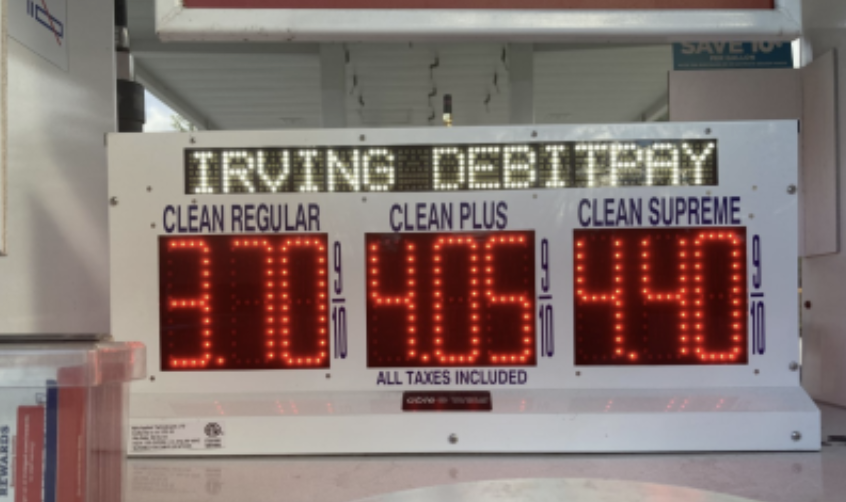Inflation kills college students, as well as working class families
Gas prices in New Hampshire, and across the country, make it difficult for college students to be able to fill their tank
November 17, 2022
The United States’ inflation rate has been consistently sitting above 7% since last December, a figure much higher than the 1-3% that has been the norm for the past few decades.
This percentage is the highest inflation rate since February 1982, leaving 2022 on track toward setting a 40-year record for the average annual inflation rate. This development has concerned both economists and the general public, as nearly a third of voters in the recent midterm elections named inflation as their most important issue. As winter approaches, and heating and electric bills become a vital necessity for much of the country, where the inflation rate sits will play a significant role in how many Americans are able to pay them.
Inflation is a highly complex economic phenomenon; in the most basic terms, it refers to the natural increase in prices in an economy that occurs over time. It’s the reason why you could buy a candy bar for a quarter in the 80s, but today, it’s hard to find one for less than a few dollars; it’s also why the average household income has more than doubled. Essentially, as time goes on, the value of money decreases. Economists agree that inflation is naturally occurring and isn’t a bad thing in itself, so long as it stays at a relatively low rate. This, of course, is what makes the current state of inflation such a problem. Even rates of 3-4% inflation per year are often considered signs of an unhealthy economy, and the rates of 7-9% that have plagued the economy for the past year are widely recognized as a major inflation surge.
Numerous theories have been proposed regarding the cause of this surge, ranging from the COVID-19 pandemic to the war in Ukraine, both of which have had wide-ranging impacts on the global economy. More specifically, some economists have placed the blame for the high inflation rate on the various stimulus programs launched by the government during the pandemic, while others point to the global supply shortage that has come about as a result of both COVID and the Russo-Ukrainian War. It’s likely that the spike in inflation is the result of a number of these factors rather than just one, but either way, economists all agree that a 40-year high in the inflation rate is cause for concern.
The high inflation rate and the resulting increase in prices over the past year have affected the lives of Americans across the country, and students here at Saint A’s are no exception. As students have settled back into life on campus this fall, many have found it more difficult to pay for simple expenses, like gas or groceries, than in previous years. Junior Faith Williamson shares her experience so far: “I don’t think I’m driving more than I used to, but I’m definitely spending more than I used to [on gas]. I also am buying groceries more than I have in the past because I have an apartment this year, and that’s opened my eyes to how high the costs are for things like food too.” Faith elaborated that it’s been especially difficult to pay for these costs since moving in this fall, at least when compared to summer break, when the costs of living in an apartment weren’t a factor. She added that while she’s able to work nearly full-time over the break, that’s just not possible now that she’s back on campus as a student. She states: “I don’t make a lot working on campus, so every hour counts. I have to work the extra hour so that I can buy groceries and pay for gas.” Faith believes that this is more to do with working less hours than insufficient pay, as students simply aren’t able to work as much during the school year as they can on break.
There is a light at the end of the tunnel for Anselmians who are struggling with inflated expenses, as the rate is beginning to fall once again, having hit a high of just over 9% in June but dropping back down to around 7% in October, which was lower than expected. If this trend continues, the rate could be back to a stable level within the year, as many of the shortages that led to inflation within certain markets are beginning to ease. While even economists can’t predict the future, these diminishing shortages will hopefully bring about stable inflation and better prices for people both across the country and here on the Hilltop.



